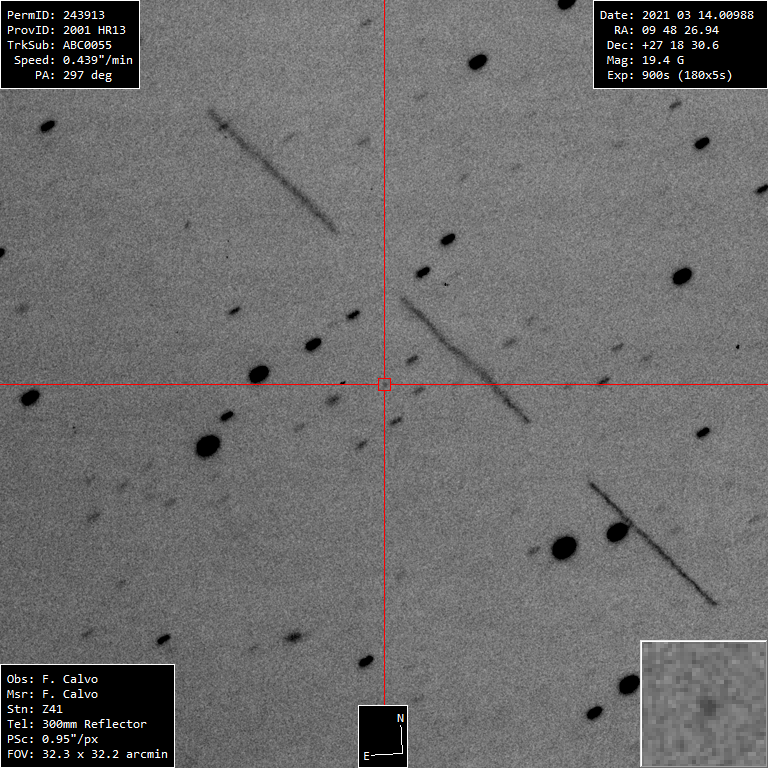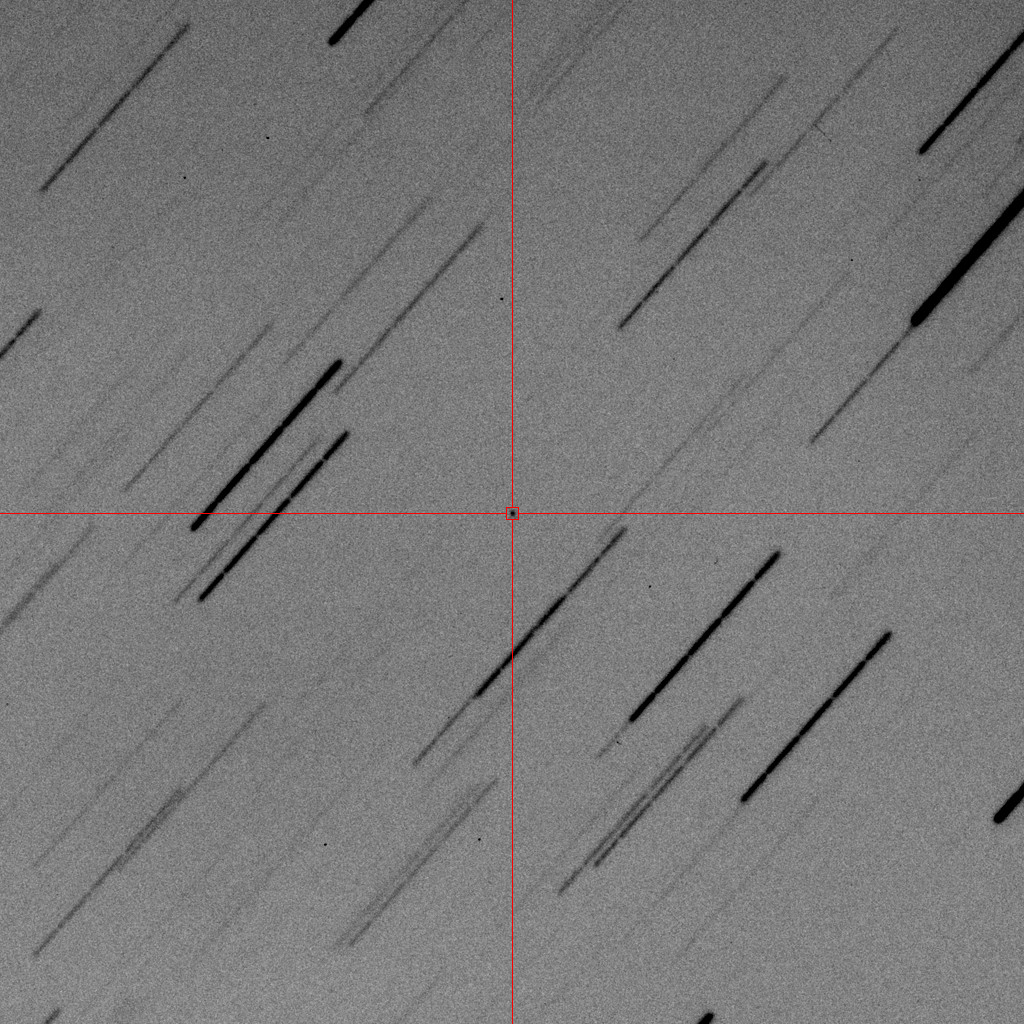2021EQ3
2021 EQ3 is an Apollo-type asteroid, with an estimated size of 22 meters. It was first observed on March 11, 2021 by the Mt. Lemmon Survey team.
Let's see its evolution from March 12 to 15, 2021.
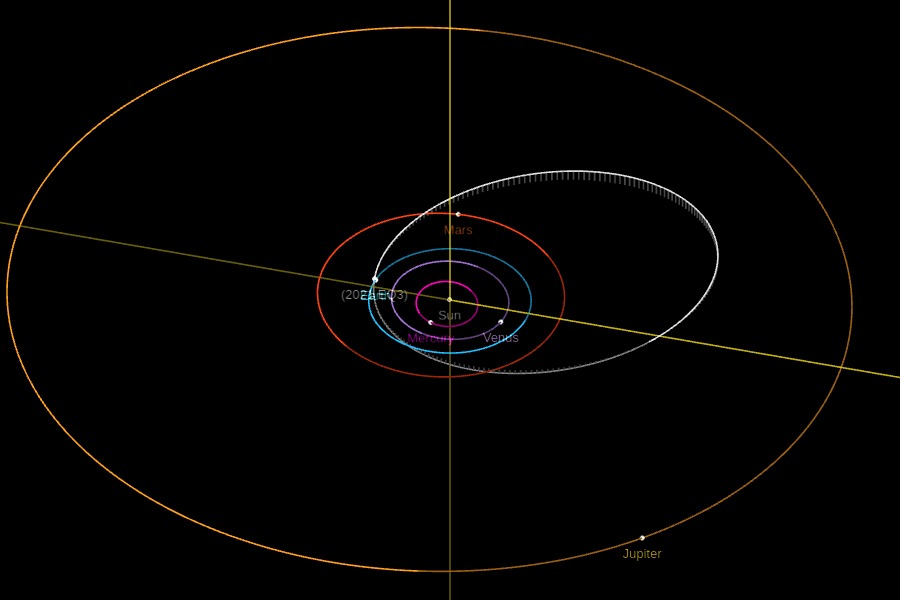
March 12, 2021
Night of the first contact with it, at that moment, we find it still far away, being at a distance of 3.4 million kilometers, approaching our planet and moving in its orbit at a speed of 132,000km/h.
Its magnitude is still somewhat faint, close to 19 (~18.7) and with a low apparent velocity, due to its relative remoteness, of 4.58"/min.

March 13, 2021
The following night, it was already almost 1 million km closer, on its relentless path of approach, consequently, it was brighter, at 18th magnitude and doubling its apparent velocity to 8.96"/min.
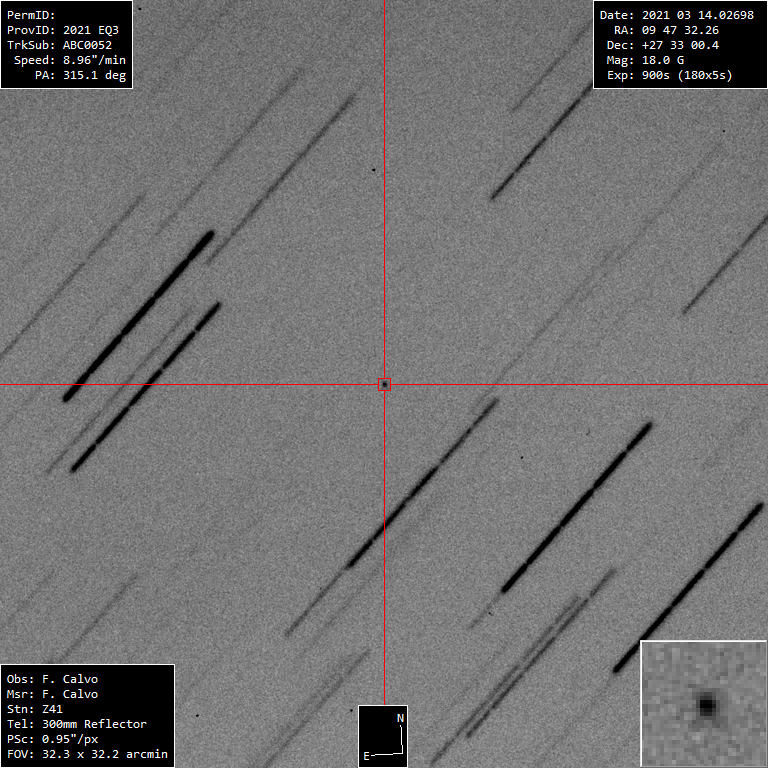
March 14, 2021
On March 14 we already had it at 1.3 million kilometers (just over 4 times the distance to the Moon) and even brighter, at magnitude 17.
The 3 sequences I show below are separated by an interval of ~15 minutes between each one, as an effect of its approach, it is remarkable to see how its apparent velocity increases progressively, from the initial 26.1"/min to 27.1"/min, which forced me to lower the exposure time to 2 seconds per shot.
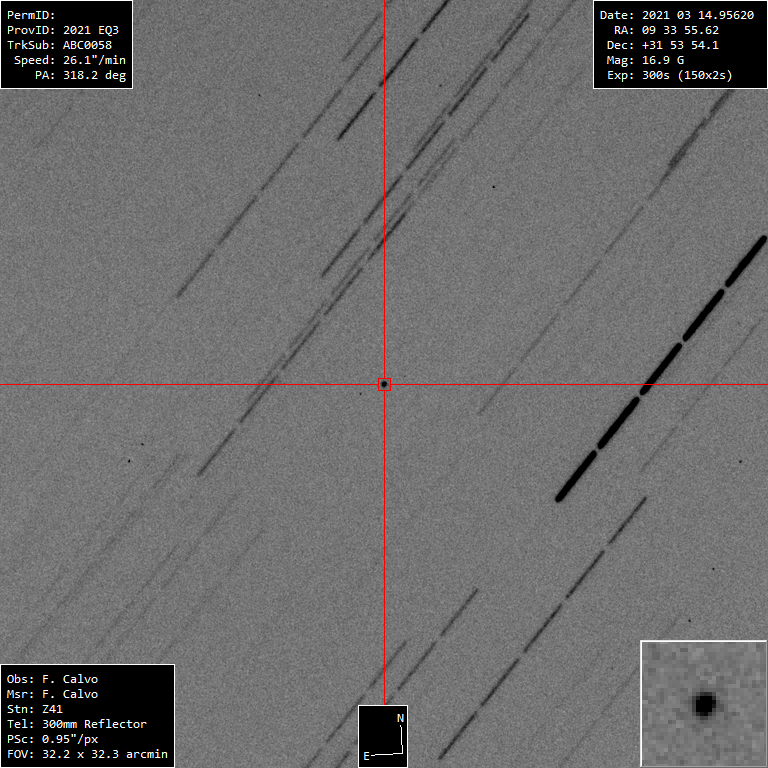
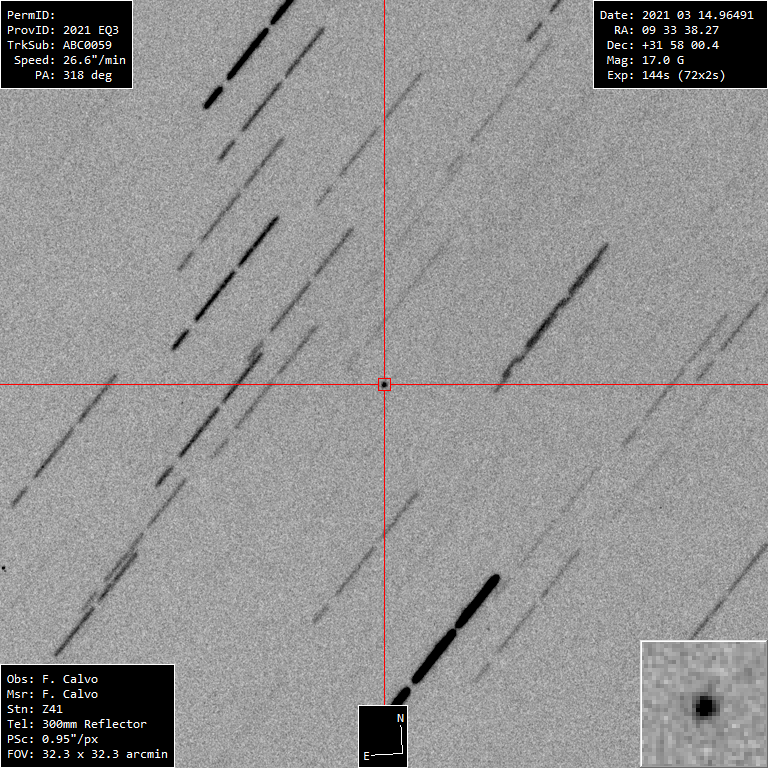
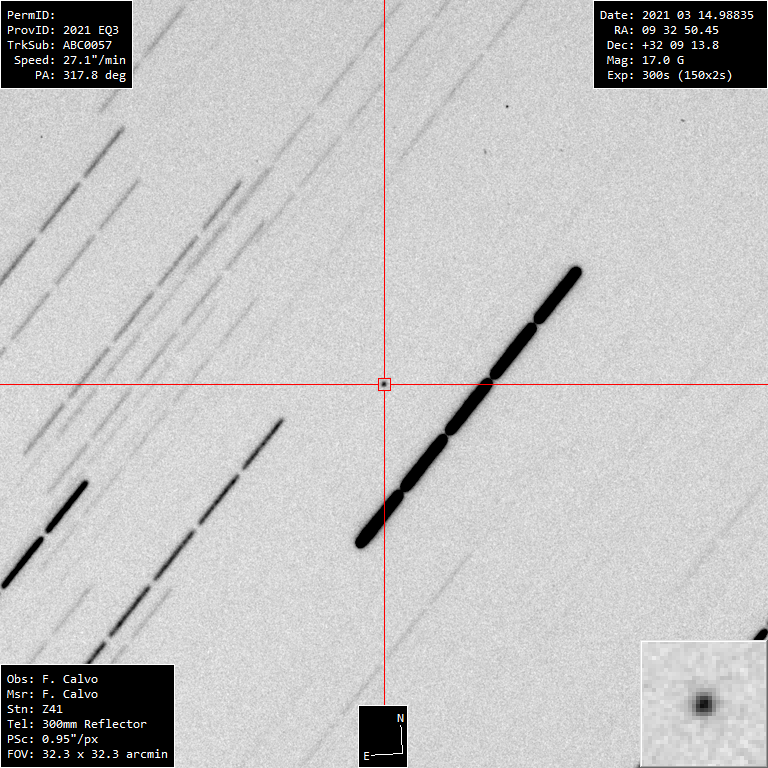
March 15, 2021
And the day of its maximum approach arrived.
In a first series of captures, early in the evening, we see it pass by as a volide at no less than 202"/minute and a magnitd of 15.5.
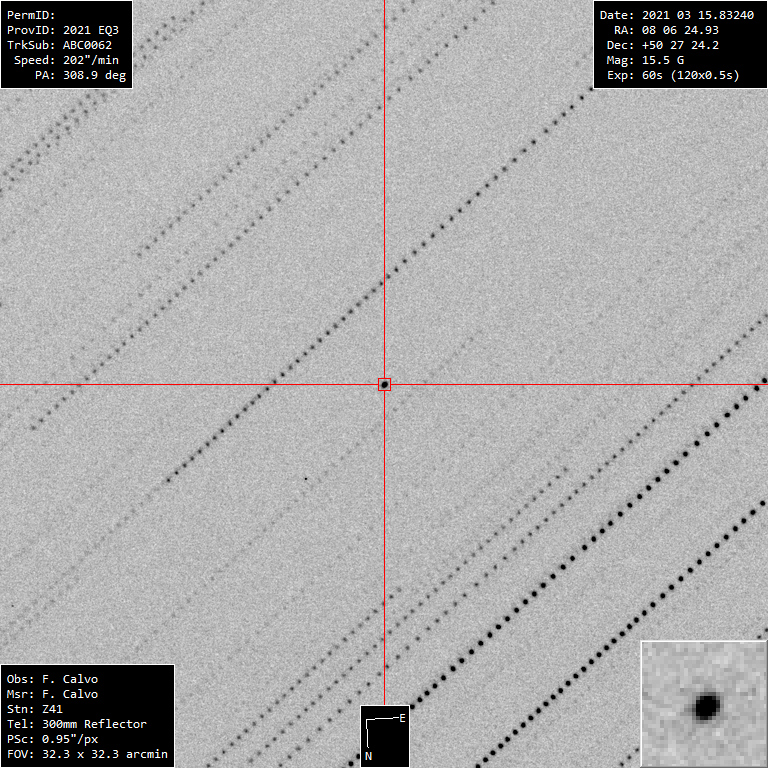
And only half an hour later it had already increased its speed to 235"/minute, being at that very moment 400000km away from our heads.
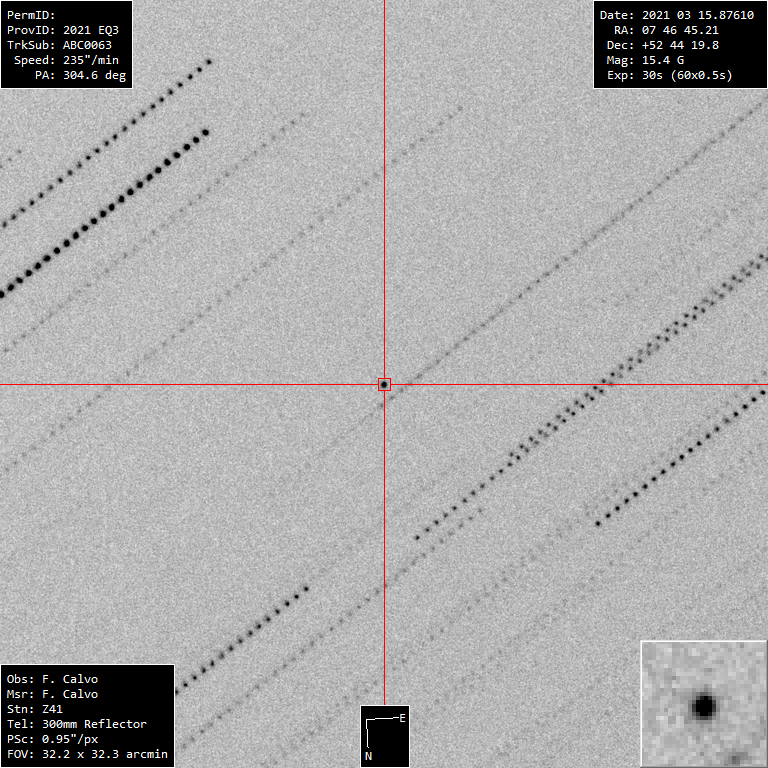
Here we see it in a real time video, captured at 3fps, crossing at full speed (in those moments, already well over 300"/minute):
The maximum approach is estimated for the early hours of March 16, around 04:30h, at that time, already very low on the horizon, it will reach only 300000km (practically the distance that separates us from the Moon), passing at more than 500"/minute.
From that moment on, it will not be visible from the northern hemisphere at night and will start again to move away beyond the orbit of Mars, to visit us again in February 2023.
With all reservations, as I would need more data and the margin of error is large, I have made a calculation of its rotation period, and it points to appear to be under 1 hour:

Guest artists
As a curious note, it is worth mentioning that, through the field through which 2021 EQ3 has been passing, I have been encountering multiple asteroids from the main belt located between Mars and Jupiter:
-
5 km in diameter and shining at magnitude 19.7, it was located 2.7 AU away from Earth at the time of capture:
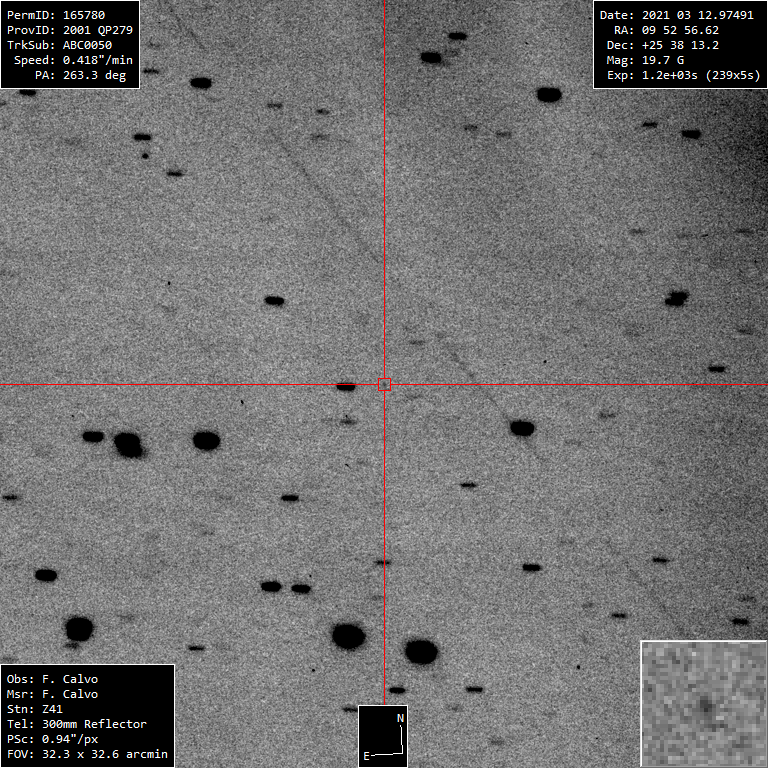
-
At 1.9 AU, with magnitude 19.5 and a diameter of approximately 3km:
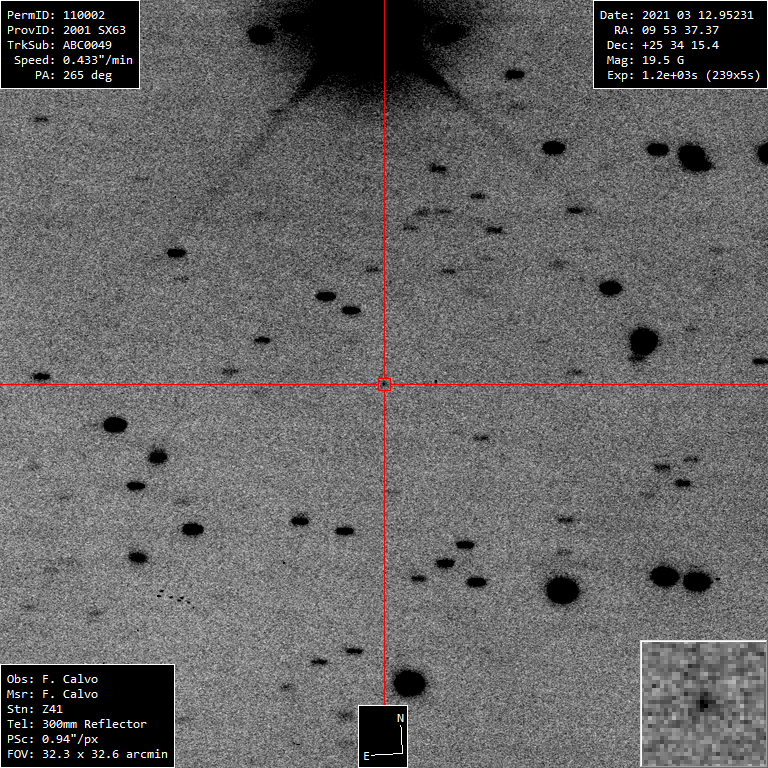
-
It has a diameter of 1.9km, being at the time of capture at a distance of 1.1 AU and shining at magnitude 19.2:
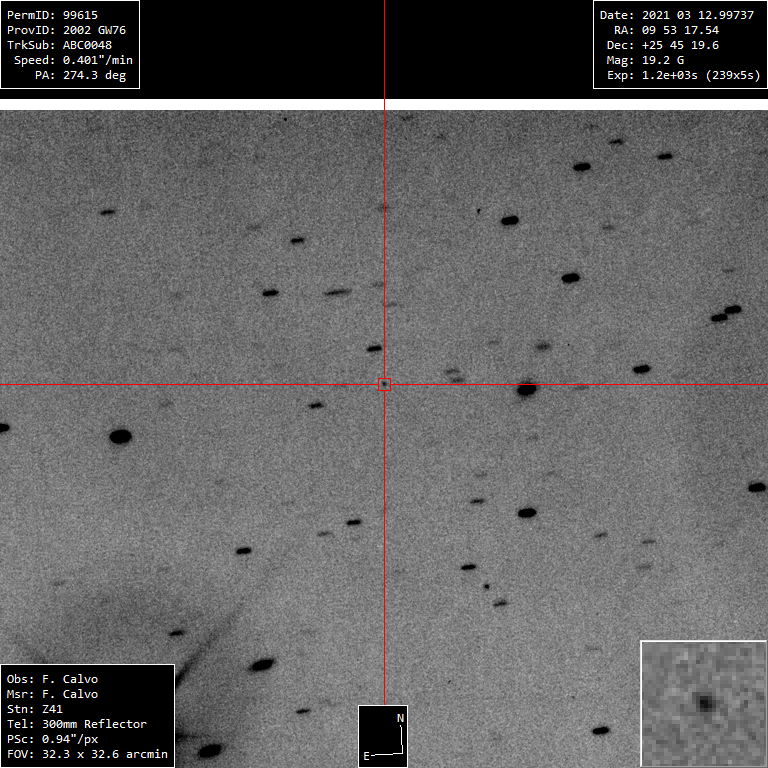
-
The faintest, at magnitude 20.5, since its size barely reaches 2.5 km and it is located at 2.3 AU:
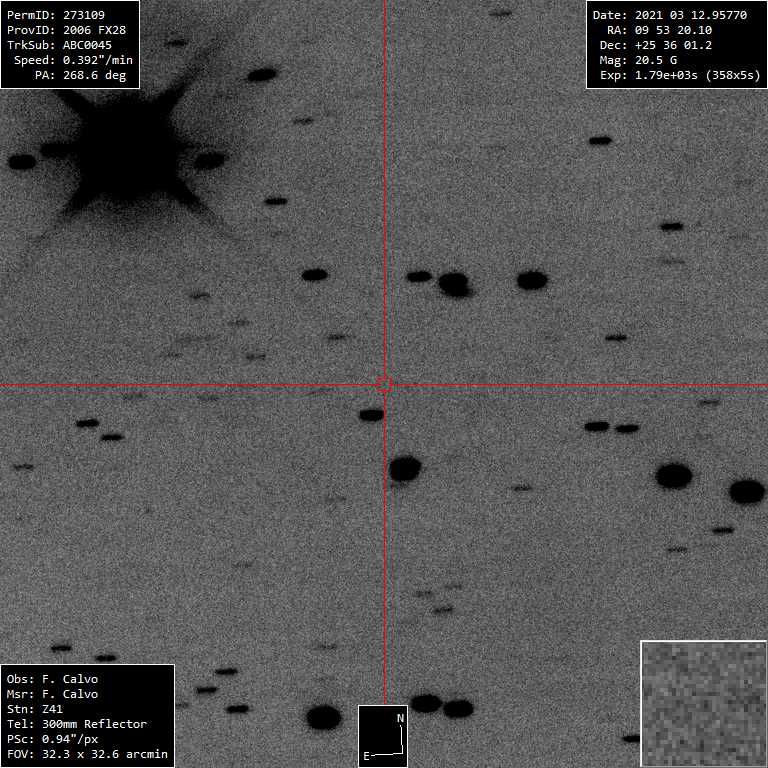
-
It has a diameter of 4 km, and is shining at magnitude 18.3, 1.4 AU from Earth:
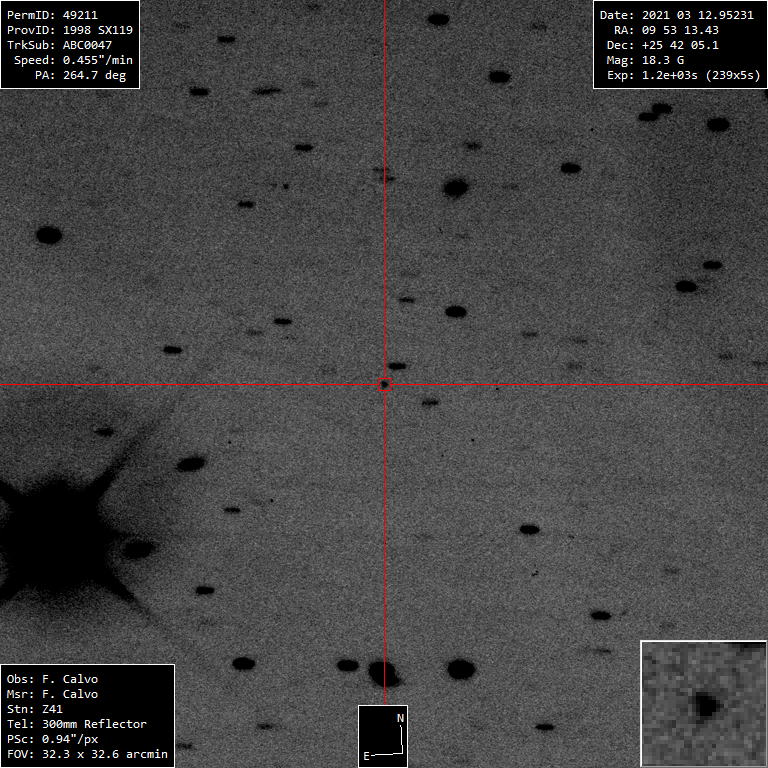
-
With a size of 11km in diameter, I located it at 3.2 AU and magnitude 19.
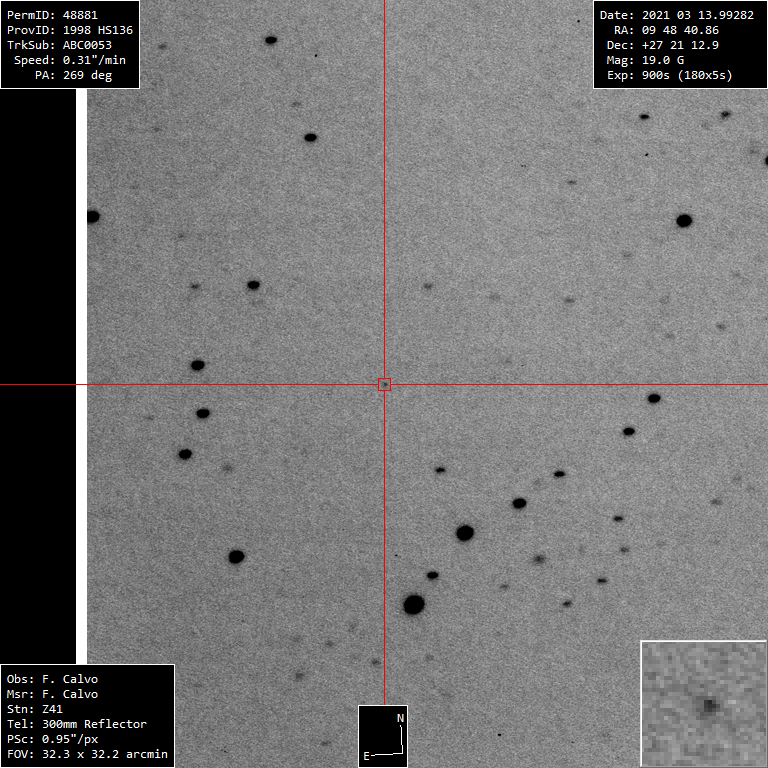
-
Located at 2.0 AU and having a diameter of 4 km. Its magnitude was 19.2:
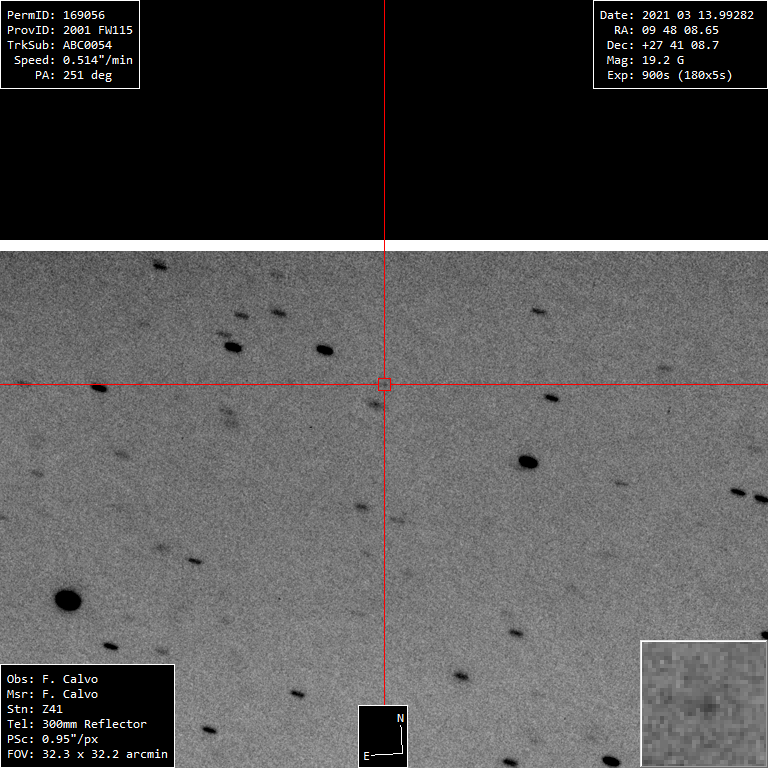
-
It has a diameter of 2.2 km, and was shining at magnitude 19.4, 1.3 AU from Earth:
